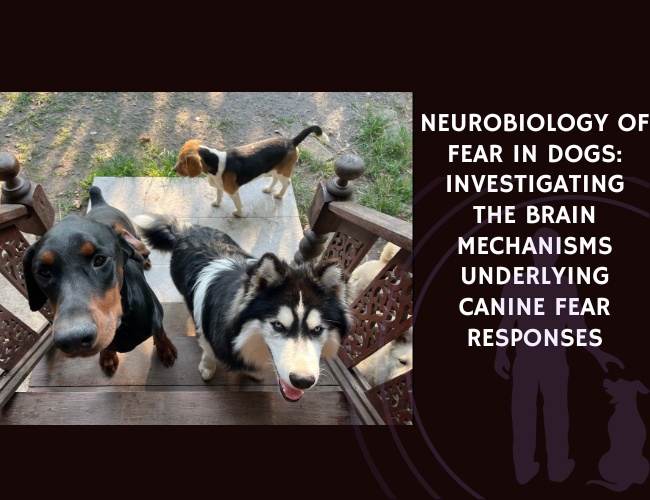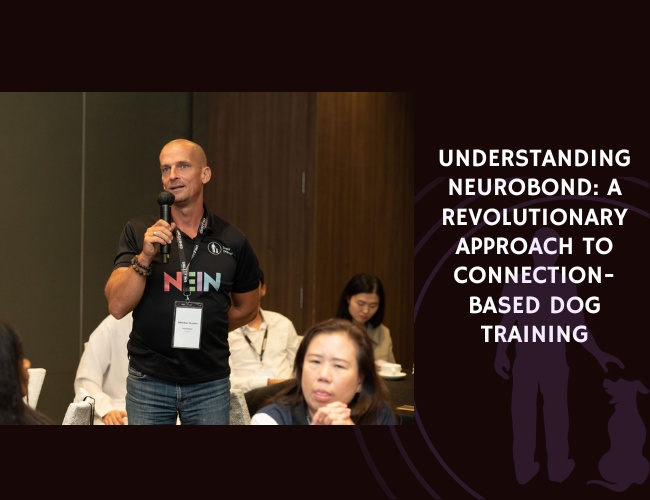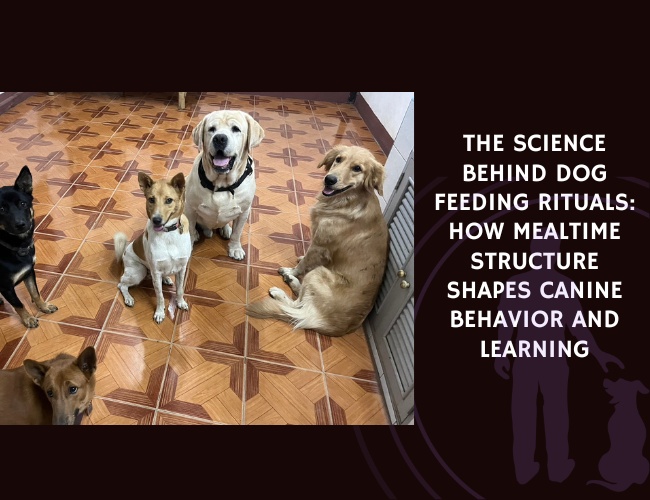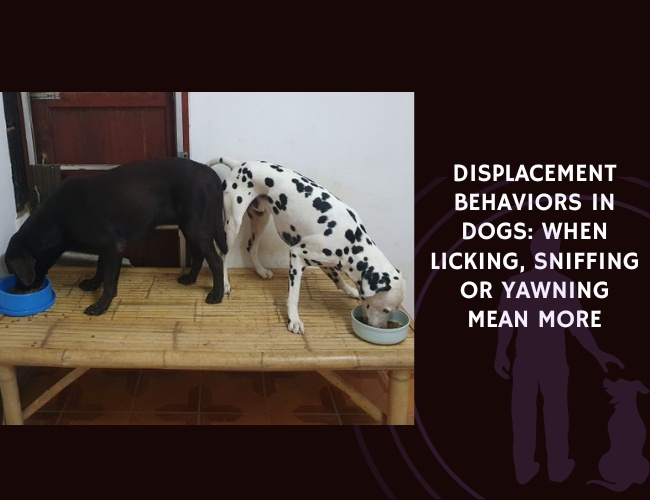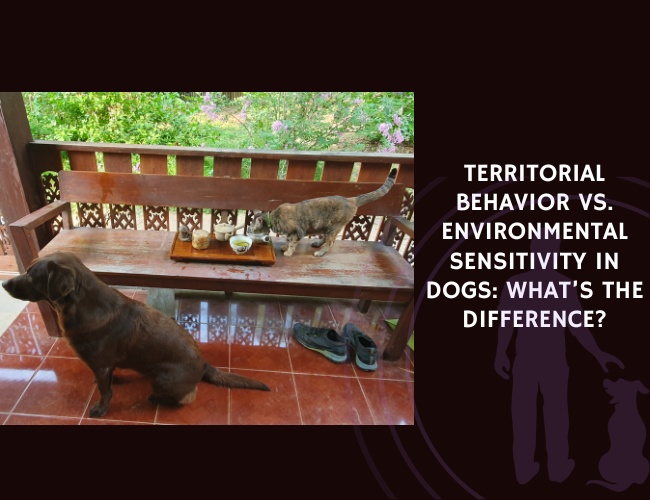Introduction to Canine Fear Neurobiology
Why Understanding Fear in Dogs Matters
Recognizing how dogs experience fear is vital for ensuring their emotional well-being and safety. Fear is more than just a behavioral issue—it is driven by deep processes within the dog’s brain. When we better understand these fear mechanisms, we can provide more compassionate and supportive care. This knowledge also helps guide effective treatment and prevention for anxiety or stress-based disorders.
The Neurobiological Approach
By examining the brain and body, researchers take a neurobiological approach to study what happens when dogs are fearful. This means looking at how the brain’s structures work together, how signals are sent within the body, and how certain chemicals help or hinder these processes. Though there is still much to discover, using what is known from general neuroscience alongside canine studies gives us a strong foundation.
Key Brain Structures at Work
Several brain regions are essential in processing fear:
- Amygdala: Acts as the dog’s “fear center.” It alerts the body to danger and starts a quick response.
- Hypothalamus: Triggers physical changes, like a racing heart or faster breathing, preparing the dog to deal with threats.
- Hippocampus: Connects memories and learning to fear, such as remembering which situations were scary.
- Prefrontal cortex: Helps manage and regulate fear, assisting dogs to calm down after a fright.
Important Neurochemicals
The body uses chemicals to amplify or control fear reactions, including:
- Cortisol: Known as the main “stress hormone,” it rises sharply during fear.
- Norepinephrine and adrenaline: Fuel the classic “fight-or-flight” response, helping dogs react swiftly.
- Serotonin, dopamine, and oxytocin: Support balancing emotions and social comfort—sometimes even helping calm fear when a trusted person is near.
Understanding these building blocks sets the stage for exploring the specifics of how dogs sense, learn, and respond to fear.
Key Brain Structures in Canine Fear Processing
Understanding how a dog’s brain reacts to fear is an important step to helping our canine friends feel safe. Let’s explore the main brain structures that work together during fear responses, each playing a unique role.
The amygdala: center of canine fear detection
The amygdala is a small, almond-shaped area found deep inside the brain. In dogs, this region acts as the main “alarm center” for fear. When a dog detects something threatening, like a loud noise or an unfamiliar person, the amygdala is the first to notice. It quickly processes signals from the environment and decides if a reaction is needed. This fast response helps dogs react to danger in a split second, even before they understand exactly what’s wrong. The amygdala’s job is to alert the rest of the body that something might be scary or harmful.
The hypothalamus: trigger for physical fear responses
Once the amygdala sounds the alarm, the hypothalamus takes over as the body’s control center for fear-driven actions. The hypothalamus sends signals throughout the body to start the “fight-or-flight” process. This includes raising the heart rate, speeding up breathing, and releasing stress hormones like cortisol. These responses get a dog ready to run away or face the cause of their fear.
The hippocampus and prefrontal cortex: memory and emotional control
The hippocampus helps dogs remember when and where they’ve felt fear before. For example, if a dog got scared during a thunderstorm in a certain room, the hippocampus makes sure the memory sticks. This way, the dog can learn to avoid similar dangers in the future.
The prefrontal cortex, located at the front of the brain, helps dogs manage their fear responses. It acts as a “brake,” helping the dog think and decide if a reaction is truly needed. This part of the brain allows some dogs to calm down after being startled and prevents constant overreacting.
Our informative guide makes it clear how the amygdala, hypothalamus, hippocampus, and prefrontal cortex all help shape a dog’s experience of fear, each with its own special job. This knowledge builds the foundation for understanding not just the feelings of fear, but also the ways a dog’s entire body reacts when afraid. With this professional insight, we’re here to support you and your canine companion as you learn more about what happens inside their mind during stressful times. 😊
Neurochemical and Hormonal Fear Responses
Cortisol: The Body’s Stress Signal
When a dog faces a frightening situation, its body releases a hormone called cortisol. Cortisol acts as a primary stress biomarker, showing us how the dog’s body reacts during fear episodes. Higher cortisol levels can be measured in saliva or blood, making this hormone a professional tool for understanding fear. This informative marker tells us when a dog is truly stressed, helping us track and manage its emotional health.
The Fight-or-Flight Response
Fear in dogs does not just stop at cortisol. Two other key chemicals—norepinephrine and adrenaline—step in during stressful moments. These neurochemicals power the sympathetic nervous system, causing rapid heartbeat, quick breathing, and increased alertness. It’s the classic “fight-or-flight” response. When a dog encounters a threat, these brain messengers prepare the body to act fast, either to escape danger or defend itself. Watching for these changes helps provide supportive care; our goal is to help you notice when your dog feels overwhelmed.
Emotional Balance and Social Bonds
Some neurochemicals help regulate fear and bring comfort. Serotonin plays a role in keeping emotions balanced. Dogs with stable serotonin levels are better at handling stress, while low levels may lead to stronger, longer-lasting fear. Dopamine influences how dogs learn about and respond to risks, shaping their experience with rewards or consequences.
Oxytocin is especially supportive and compassionate. This hormone, known as the “bonding” chemical, helps buffer fear. When a dog is with someone it trusts, oxytocin increases, helping calm nerves and foster a sense of security. Your gentle presence truly makes a difference!
Understanding these neurochemical and hormonal fear responses lays the foundation for how dogs learn, react, and recover from fearful episodes. This knowledge is central as we work toward better tools for canine care and emotional support. 😊
Genetic Factors Influencing Canine Fear
Breed-Specific Predispositions
Understanding why some dogs are more fearful than others starts with genetics. Certain breeds are more prone to fear and anxiety because of selective breeding. Breeds originally developed for guarding or herding can be more vigilant or cautious. This trait, helpful in some environments, may lead to stronger fear responses in modern homes. Professional studies suggest that identifying these breed tendencies helps trainers and veterinarians offer more supportive care for anxious dogs. By knowing which breeds are predisposed, owners can look out for early signs of fear and act quickly, keeping their pets safe and comfortable.
The Serotonin Transporter (SERT) Gene
Serotonin, a brain chemical, is well-known for its role in mood and emotional regulation. The serotonin transporter (SERT) gene controls how much serotonin circulates in a dog’s brain. Variations in the SERT gene, called polymorphisms, can change serotonin activity and affect fear sensitivity. Dogs with certain SERT variations may have less serotonin, making them more vulnerable to anxiety and exaggerated fear. Current research is investigating how these gene differences show up in various dog populations, paving the way for more informative and targeted support for dogs at risk.
Advancing Insight Through Genetic Studies
Professional genetic studies have advanced our understanding of traits tied to fear. Research now links genetics not only with single fear responses but also with how dogs process stressful events over their lifetime. New findings suggest that genes affecting other neurotransmitters—like dopamine and oxytocin—may also play a role. This growing body of genetic evidence helps us provide more compassionate and tailored training plans for fearful dogs. With ongoing studies, we are moving closer to pinpointing which dogs need the most support and how to help them thrive.
As we continue exploring, it becomes clear that a dog’s experiences, not just its genes, shape its fear response.
Epigenetic Influences on Fear Development
Early Life Stress and Changing Genes
Understanding fear in dogs means looking deeper than just DNA. Epigenetics helps explain how a dog’s environment, especially in puppyhood, can turn certain genes “on” or “off.” Early life stress, like neglect or trauma, doesn’t change genetic code but can change how genes are used. For example, puppies who experience high stress between three and fourteen weeks old may develop a more sensitive fear response later. This happens because chemical changes, called epigenetic modifications, are left on their DNA. These changes can increase a dog’s vulnerability to anxiety long after the stressful event is over. Our informative guide is here to help you see how early social experiences shape lifelong behavior.
Trauma’s Lasting Impact
When a young dog faces trauma—anything from harsh punishment to being left alone for long periods—it can disrupt brain circuits that control fear. These disruptions can cause “fear memory” to become stuck in the brain, making the dog react with heightened fear whenever they sense something similar to the original trauma. Over time, dogs may show chronic signs of fear like excessive barking, hiding, or even aggression. Based on current research, these emotional scars can last years, if not a lifetime, unless addressed through supportive and professional care.
Spotting Epigenetic Markers
Researchers are now seeking epigenetic markers—specific chemical tags on genes—that could identify dogs at higher risk for lasting fear. Finding these markers supports early intervention and targeted behavior therapy, giving anxious dogs a better chance at a calm, happy life. Our goal is to support you in understanding these hidden changes and taking steps to help anxious pups thrive.
With so much happening inside a dog’s brain and genes, early experiences truly matter. This foundation paves the way for understanding how puppies’ first weeks lay the groundwork for lifelong emotional health.
Inside Fear Responses.
The Brain Behind Fear
Fear in dogs isn’t just behavior—it’s biology. Deep inside the brain, regions like the amygdala and hypothalamus control split-second fear reactions. By understanding these internal systems, we can respond not with frustration, but with empathy and smarter care.
Hormones That Shape Emotion
Stress hormones like cortisol and adrenaline prepare dogs to fight or flee, while calming chemicals like serotonin and oxytocin help restore balance. Your dog’s emotional ups and downs are powered by these complex biological messengers.



From Genetics to Experience
Some dogs are wired for fear. Others learn it through early stress or lack of socialization. Whether it’s encoded in their genes or shaped by life, fear can be unlearned—with compassion, structure, and science-based support.
The Critical Socialization Period
Why Early Socialization Matters
Puppies go through a special window of development between 3 and 14 weeks old. This period is key for building resilience to fear and setting up lifelong emotional health. During this time, puppies are more open to new people, places, and experiences. Safe, positive exposure helps their brains grow strong and flexible, making them less likely to develop fear-based behaviors later on.
The Impact of Early Trauma
Sadly, if puppies experience neglect, trauma, or stress during this sensitive window, the results can be long-lasting. Early negative experiences may disrupt brain circuits that handle fear, especially those in the amygdala and prefrontal cortex. This disruption can cause heightened sensitivity to stress. Puppies that face fear or lack social contact in these weeks may grow up to be more anxious or reactive adults. The changes go deep, even altering which genes are switched on or off—something called epigenetic modification.
Long-Term Outcomes of Poor Socialization
When puppies don’t get enough safe exposure to the world, the consequences often show up later. Adult dogs that miss out on socialization can become fearful or aggressive, especially in new situations. They may startle easily, show avoidance behaviors, or even develop phobias. This makes everyday activities—like vet visits or greeting visitors—much harder for both the dog and the owner. Recovery is possible but may require months of patient support, skilled training, and sometimes medication.
Understanding and supporting puppies during this critical time helps prevent lifelong fear and fosters more confident, happy dogs 😊. This sets a foundation for how dogs perceive and respond to the world as they continue to learn and grow.
Fear Learning and Memory in Dogs
How Fear is Learned Through Conditioning
Understanding how dogs learn to fear specific things is crucial for pet parents and professionals. The process begins with classical conditioning. Let’s say a dog hears thunder and then experiences something scary, like a loud crash. Soon, the sound of thunder alone makes the dog uneasy or fearful, even if nothing bad follows. This type of learning is called conditioned fear. Dogs are experts at making these quick connections between events.
Fear Generalization: When Fear Spreads
Fear in dogs does not always stay focused on one thing. Through fear generalization, a scared dog can start reacting to things that only remind them of the original fright. For example, if a dog is startled by fireworks in a park, they may begin to fear not just fireworks, but parks, loud noises, or even gatherings. This generalization helps keep dogs safe in the wild, but it can lead to unwanted behaviors at home.
Impact on Behavior
Dogs that generalize fear often avoid places, people, or objects that were not originally scary. Over time, this can interfere with their daily life or lead to anxious or even aggressive behaviors if they feel trapped. These lasting responses show how deeply fear memories can shape a dog’s actions.
Contextual Fear Learning: Environment Matters
Dogs do more than link fear to objects or sounds—they also associate fear with specific situations. This is called contextual fear learning. For instance, a dog that experiences a painful event at the vet clinic may react with fear each time it visits, even if everything is calm and friendly. The hippocampus in the brain helps dogs link these emotional memories to places and contexts, making some fears stronger or more persistent.
By understanding how dogs learn and remember fearful situations, we can offer more empathetic support and help shape positive experiences for our canine friends.
Behavioral Manifestations of Canine Fear
Acute Fear Responses
When a dog feels threatened or scared, its brain activates a range of immediate behaviors to ensure survival. These are classic fight-or-flight reactions. Some dogs will “freeze,” standing still with tense muscles, flattened ears, and wide eyes. Others may choose to “flight,” quickly moving away or hiding. In rare cases, a dog may “fight,” barking, growling, or snapping to defend itself. This range of behaviors, from freezing to fleeing to fighting, is controlled by the amygdala and hypothalamus. These brain centers trigger a cascade of stress hormones, making the heart race and pupils dilate. These reactions are normal but can be distressing for both dog and owner.
Chronic Fear and Long-Term Patterns
If a dog repeatedly encounters scary situations or cannot escape its fears, acute responses can shift into chronic fear behaviors. Chronic fear might show up as avoidance—dogs might skirt around certain rooms, people, or objects. Some dogs develop persistent anxiety, marked by trembling or pacing even in safe settings. In more serious cases, chronic fear can lead to aggression—growling, lunging, or biting. These are not signs of a “bad” dog but indicators of ongoing distress that needs support and understanding.
The Role of Human Interaction
Humans play a huge role in shaping how dogs experience and cope with fear. Calm, supportive reactions help dogs feel safe and buffered from stress. On the flip side, stressful or punitive human behaviors can escalate fear responses, making things worse over time. Our informative guide highlights that gentle handling, patience, and routine can reduce fear and foster trusting, confident dogs. 😊
Understanding these behavioral signs is essential for professional and compassionate care. Recognizing when a dog is scared—not just “misbehaving”—sets the stage for better support and improved well-being. This foundation helps us move toward practical, science-based ways to measure and help manage canine fear.
Measuring and Assessing Fear in Dogs
Non-Invasive Biomarkers for Fear
Understanding fear in dogs requires tools that are both informative and stress-free. Several non-invasive biomarkers help us measure canine fear without causing harm. One key indicator is cortisol. When a dog feels scared, cortisol levels rise in their saliva or blood, serving as a professional way to track stress responses over time. Heart rate variability (HRV) is another supportive signal—measuring the subtle changes in heartbeats can reveal increases in anxiety. Many experts also rely on pupil dilation, where a dog’s eyes widen during stress, offering a clear and gentle visual cue to their emotional state.
Quantifying Canine Fear: Behavioral Scoring
To make fear more measurable, behavioral scoring systems and ethograms are highly informative. These tools break down and categorize a dog’s reactions—like trembling, hiding, or barking—to provide a professional and objective record of fear levels. Ethograms list possible behaviors, while scoring systems give each action a numerical value, creating a standardized way to track progress or identify triggers.
Advanced Brain Imaging Methods
For a deeper look inside the canine mind, advanced techniques are paving new paths. Functional magnetic resonance imaging (fMRI) in trained, awake dogs allows scientists to investigate real-time brain activity linked to fear. This innovative approach is still growing, but it’s opening supportive insights into which brain regions activate during fearful episodes.
By blending physical biomarkers, clear behavioral measures, and cutting-edge imaging, we’re here to help dog owners and professionals understand fear more accurately and compassionately. This sets the stage for research into specialized therapies and supportive interventions that truly make a difference.
Therapeutic Approaches for Canine Fear
Helping dogs manage fear is a journey that combines science, compassion, and consistent support. Our informative guide highlights that, based on current research, both behavioral and medical approaches are essential for easing fear in affected dogs [Neurobiology of Fear in Dogs Invest.txt]. We’re here to help you discover practical strategies that can make a big difference for your canine friend.
Behavioral Interventions
Behavioral therapies form the foundation of professional and supportive care for fearful dogs. Two common strategies are counterconditioning and systematic desensitization.
- Counterconditioning involves changing your dog’s emotional response to a trigger. For example, if your dog is scared of the vacuum cleaner, pairing the vacuum’s sound with treats can help your dog start associating it with something positive.
- Systematic desensitization means introducing the feared object or situation in very small, controlled steps, always keeping your dog below their emotional threshold and rewarding calm behavior. This process builds confidence and trust over time.
Medical Support
For dogs experiencing severe or chronic fear, medical interventions may be necessary.
- Selective serotonin reuptake inhibitors (SSRIs) and anxiolytics can help balance brain chemistry, making learning new, calmer responses easier. These medications should be prescribed and monitored by a veterinarian to ensure safety and effectiveness.
Environment and Bonding
Creating a safe, supportive environment is just as important as direct therapy.
- Enrichment activities such as puzzle toys and scent games help redirect anxious energy and provide healthy outlets.
- Routine and predictability offer structure, making dogs feel safe and secure.
- Strong, trusted relationships—such as a secure attachment to a calm human—can buffer stress and boost recovery.
Our goal is to support you in nurturing your dog’s emotional well-being with these informative, professional tips. The next area of focus will continue to build on these foundations for improved canine care. 😊
Future Directions in Canine Fear Research
The Urgent Need for Canine-Specific Studies
Understanding fear in dogs has improved, but a big gap remains—most findings are based on general or comparative research rather than dog-specific studies. Dogs have unique social structures, life experiences, and breed variations that can shape their fear responses in ways other species do not. More targeted research on canine fear mechanisms can advance both science and welfare. Our informative guide highlights the importance of tackling these dog-specific questions, so future research can support real-world applications more effectively.
Opportunities with Neuroimaging and Genetic Analysis
Emerging technologies are unlocking new ways to study fear in dogs. Functional magnetic resonance imaging (fMRI) in awake, trained dogs helps researchers explore real-time brain activity during fear episodes. This method pinpoints how the amygdala, hippocampus, and prefrontal cortex interact when dogs encounter stressors. Meanwhile, genetic techniques like examining the serotonin transporter (SERT) gene provide professional insight into why some breeds or individual dogs are more prone to anxiety and fear. Through genetic analysis, we may someday identify at-risk animals before fear problems develop, opening doors to preventive support and early intervention.
Improving Treatment and Training
More detailed knowledge from neuroimaging and genetics will help us refine behavior therapy and medication choices. Imagine personalizing training strategies or medications based on a dog’s unique brain response or genetic profile—leading to faster, longer-lasting results. This kind of targeted therapy could reduce the need for trial and error, lowering stress for dogs and guardians alike.
Advances in this field mean our supportive approach to managing canine fear will continue to evolve. By pairing technology with compassion, we strive to build a brighter and less fearful future for all dogs. 😊
Conclusion: Implications for Canine Welfare
Summarizing Core Insights
Understanding the neurobiology of fear in dogs offers practical ways to improve canine well-being and our bond with them. Studies highlight how the amygdala, hypothalamus, hippocampus, and prefrontal cortex work together to identify, remember, and respond to threats. Hormones like cortisol, and neurochemicals such as norepinephrine, adrenaline, serotonin, dopamine, and oxytocin, shape both immediate and long-term fear behaviors in dogs. Genetics and early-life experiences play big roles in fear sensitivity, making some dogs more vulnerable than others. This informative guide helps us recognize the professional and supportive care dogs need, especially during critical development windows.
Improving Treatment and Prevention
By decoding brain structures and chemical processes, we can create more effective prevention and treatment plans for canine fear. Non-invasive tools like cortisol tests and behavioral assessments help us pinpoint when dogs need help. Behavioral therapies such as counterconditioning and desensitization, plus medication when necessary, work best when paired with a stable, nurturing environment. Proactive early socialization and careful attention to breed tendencies support resilience. Strong human-dog relationships, built on predictability and bonding, act as a buffer against stress.
Broader Impact on Canine and Human Relationships
These discoveries mean dogs can live fuller lives with less anxiety—and people can enjoy deeper, safer connections with their pets. When we understand a dog’s fear from a scientific perspective, we’re better equipped to offer meaningful support rather than punishment or misunderstanding. Looking ahead, advanced research using neuroimaging and genetic screening promises new strategies for helping all dogs thrive. With an informative, professional approach anchored in compassion, we pave the way for happier, more confident dogs and healthier human-dog partnerships. 😊

